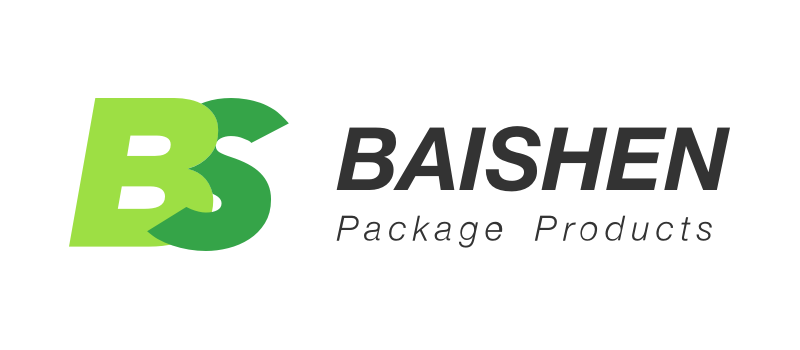Your packaging is your silent salesman in a busy marketplace. One of the most efficient forms is a stand-up pouch that has demonstrated one of the highest effectiveness among subjects, but the most powerful aspect of it is the details. Choosing the right style among all the available options for various products is an important decision that contributes to such things as shelf appeal or freshness. It is a definitive guide that walks you through the defining pouch styles, materials, and features that introduce you to the necessary choices that will enhance your brand.
Why Choose Stand Up Pouches?
It is worthwhile to nail down the underlying logic before we get into the details. What is the reason behind the popularity of this flexible format? The move away from hard containers such as jars, cans, and boxes is not random; it is based on a set of obvious, strong benefits that appeal to both brands and consumers.
● A Clear Shelf Presence: Unlike flat packs, which lie down or boxes which can be hidden, the stand-up pouch does exactly what its name suggests. It is tall and has a wide, front-facing panel that faces the consumer. This forms a mini billboard on the shelf, giving maximum visibility and providing a better canvas to brand and high-impact graphics. It attracts attention.
● An Economic and Logistic Necessity: The figures are eloquent. Stand-up pouches are extremely lightweight and can consume up to 75 percent less material than rigid counterparts. This saving is directly converted into material savings and, more importantly, a huge saving in shipping costs. A flat sheet of film is an empty pouch; thousands of them can be stored in the space needed to store a few hundred empty jars, generating deep efficiencies in warehousing and inbound logistics.
● Better Protection and Freshness of Products: The new flexible packaging is a wonder of material science. Multi-layer films can be developed to offer a strong shield against the main adversaries of freshness: oxygen, moisture, light, and contaminants. This increases shelf life, maintains flavour and aroma, and minimizes food waste, which is becoming an appreciated attribute by smart consumers.
● Unparalleled Consumer Convenience: The contemporary consumer values convenience. Stand-up pouches serve it in spades. They can be stored easily, opened easily, and most of them have resealable zippers or spouts that keep the quality and freshness of the contents after initial use. They are made from durable materials that are light and shatterproof, which makes them suitable for on-the-go lifestyles, eliminating the dangers and weight of glass or metal, making them ideal for a wide range of products, food products, and items.
Exploring the 5 Essential Stand Up Pouch Styles
The key to making an informed choice is to understand the basic anatomy of the pouch. Although there are many variations, one of five core styles will serve most applications. They all differ in structure, in the set of benefits, and in the kind of products they are most suitable for.
1. Doypack (Round Bottom Gusset Pouch)
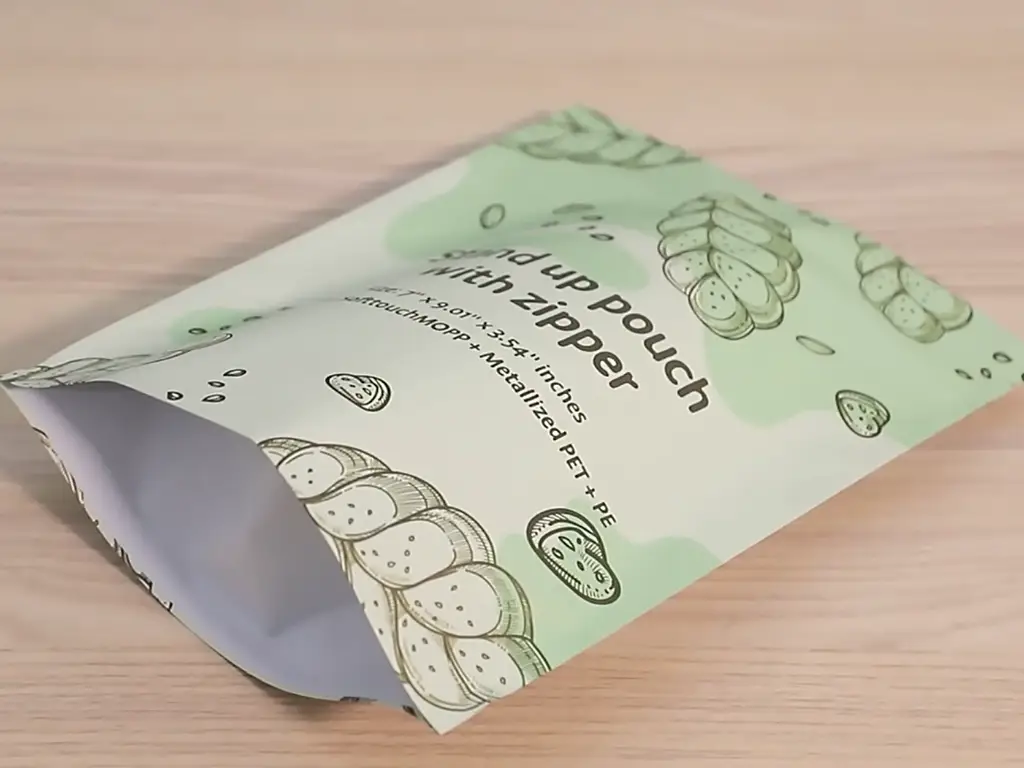
The Doyen, commonly referred to as the round bottom gusset, is the classic workhorse of the stand-up pouch industry. It is characterized by a U-shaped round bottom gusset that is welded on the bottom of the front and back panels. The gusset stretches when the pouch is filled, and forms a stable, rounded base, making it distinct from the Plow (Plough) Bottom style.
Best For: Light products. Consider coffee (8-12 oz), tea, snacks, powders, and confectionery. Its main support is the seal of the Doyen, and is therefore most economical and effective with products below a pound (or about 500g). This is the default starting point that has been tested over time by many brands entering the market.
2. The K-Seal Bottom Pouch
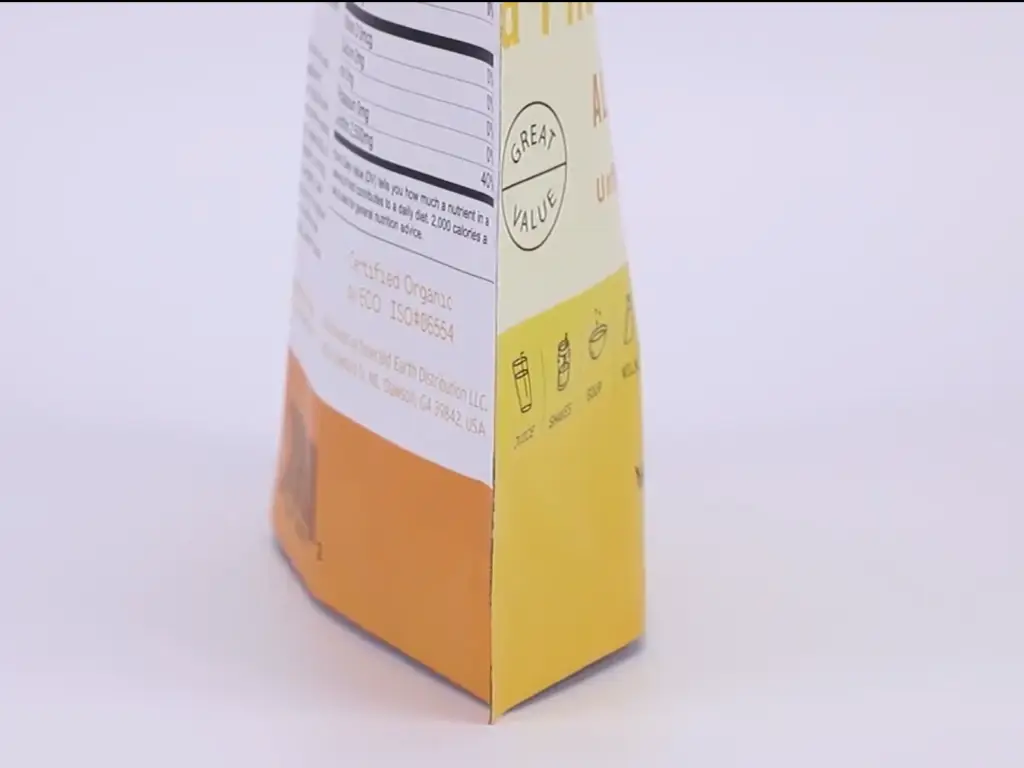
The heavier the product, the stronger the structure will be needed. The K-Seal pouch, ideal for liquid products, is the logical development. This style is suitable for medium-weight products, such as pet treats, with seals on each side of the bottom gusset that protrude at a 30-degree angle out of the base and take the shape of the letter K, allowing the product to sit at the bottom of the pouch securely.
Best For: Medium weight products, usually between 1 to 5 pounds (500g – 2.5kg). The K-Seal design transfers the pressure off the bottom seal to the front and back panels of the pouch. This doyen style enables the weight of the larger amount of product itself to assist it to sit squarely and firmly, avoiding the leaning that may happen when a Doyen pouch is overfilled. It is a common selection for lightweight products as well as in bigger bags of pet food, protein powders, and lawn care products.
3. Flat Bottom Pouch (Box Pouch or Block Bottom)
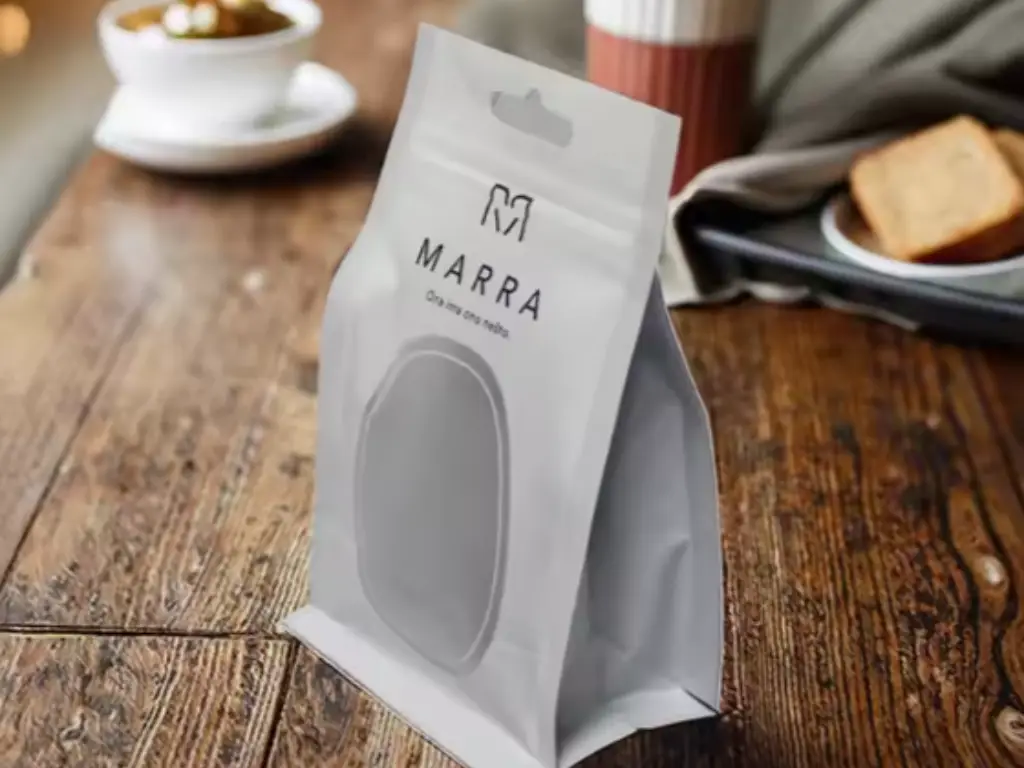
Box Pouch is a step into a high-end market. It is also called a bottom gusset pouch or flat-bottom bag, and it has five different panels: front, back, two side gussets, and a really flat bottom, making it suitable for a variety of products. It appears and acts more like a flexible box than a pouch.
Best For: High-end products that require optimum shelf life and brand space. The five printable surfaces provide unrivaled branding potential, and its blocky, stable footprint makes it an imposing presence on the shelf. It is the default option when it comes to premium coffee, gourmet pet snacks, and snacks that are more luxurious than not. It is, in a way, a packaging that cannot be overlooked.
4. The Three-Side Seal with Bottom Gusset
The Three-Side Seal with Bottom Gusset pouch is a small and effective stand up product. It is three-sided sealed (left, right, and top) with a bottom gusset that unfolds as the pouch is filled to allow the pouch to stand upright. Its construction is less complicated compared to the other gusset types, and hence it is economical and suitable for small-format products.
Best For: Products which need single-serve, trial-size, or lightweight applications. This type of pouch has a wide use of snack packs, sample products, powdered supplements, or convenient food to go to, in which portability and shelf impact are essential. It has a small form factor, which is particularly convenient to pack and display in a retail store.
5. The Shaped Pouch
This is where packaging is liberated. A die-cut package is a shaped pouch, which is specifically designed to assume a particular shape that identifies with the product or brand name, e.g., a fruit-shaped pouch to hold juice or a bone-shaped pouch to hold dog food.
Best For: Brands that want to make the biggest statement. The final conversation starter is a shaped pouch that will generate immediate brand recognition and a strong emotional response. It is perfect with single-serve drinks, children’s snacks, and any market where the novelty, additional features, and disruption are the main competitive advantages. Although it is a greater initial tooling investment, the marketing reward can be enormous.
Crafting the Perfect Pouch: Materials & Features
Once you have a sense of the ideal shape, the next step is to engineer its construction. A pouch is not just a single layer of plastic; it is a laminated structure of carefully chosen films, each contributing to the whole. This construction, paired with functional features, is what turns a simple bag into a high-performance package.
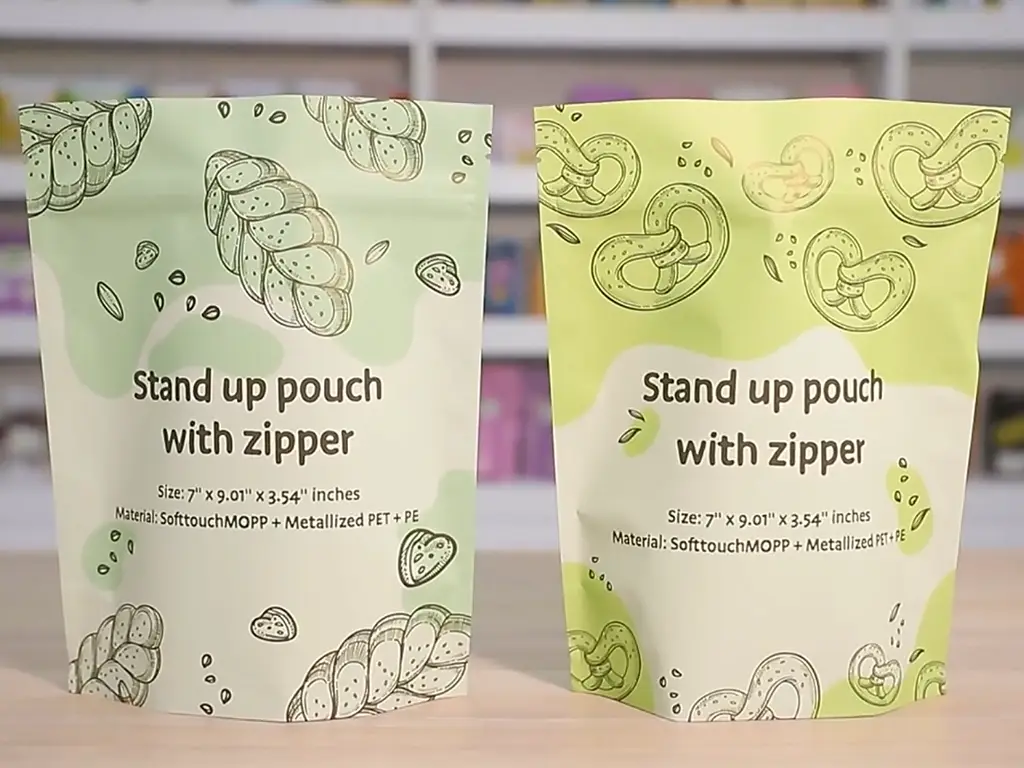
Part 1: High-Performance Material Selection
The purpose of your material structure is to provide the best environment for your product and to shield it against outside factors. This is done by lamination-adhesion of several layers of film.
- ● Maximum Barrier (Coffee, Tea, Sensitive Organics):
You require maximum protection when your product is sensitive to oxygen, moisture, and UV light. Here, enter foil (AL) or metalized PET (VMPET) layers. Print quality laminated with PET and a sealant layer such as LLDPE. This construction is veritable armor for your product and guarantees maximum shelf life and retention of its delicate aroma and flavor.
- ● Product Visibility (Snacks, Candy, Granola):
In case you want your customer to see the product, a clear structure is necessary. PET laminated to LLDPE is a common combination. The PET gives a clear, glossy, and printable outer layer, and the LLDPE gives seal and bulk. In the case of products that have sharp edges, such as pretzels or nuts, an additional layer of nylon (PA) can be applied to provide additional puncture protection.
- ● To achieve a Natural, Earthy Aesthetic (Organic Goods, Artisanal Products):
Kraft paper has a tactile, rustic quality that is a cue to natural or handmade quality. But paper by itself is no protection. It has to be laminated to a barrier layer (such as VMPET or EVOH-PE) and sealant layer on the inside to shield the product. It can include a clear window, which is made of a material such as PLA or PET, to provide the best of both worlds, a natural look, and a preview of the product.
Part 2: Smart Features for an Enhanced Experience
The conversation between the package and the consumer does not stop on the shelf. The characteristics you add will enhance the functionality of your product, making it easy and enjoyable to use at home.
- ● Zippers: Resealable zippers are a near-necessity of any multi-use product. The standard type is press-to-close zippers, which enable the consumer to easily reseal the bag, keeping it fresh and avoiding spills. In the case of powders, pocket zippers can be used to avoid the clogging of the track by fine particles.
- ● Spouts & Fitments: Liquids, semi-liquids, and gels cannot be done without a spout. They provide dispensing that is controlled and mess-free and can be supplied with resealable caps. It can be positioned (top-center or corner) to make it convenient to use.
- ● Tear Notches: A very important, yet simple feature. Laser-scored or mechanical tear notches in the right location make the first opening clean and easy without scissors, avoiding customer frustration.
- ● Hang Holes: In the case that your product will be hung on a pegboard in a retail environment, a hang hole (round or sombrero) is necessary to hang and be seen.
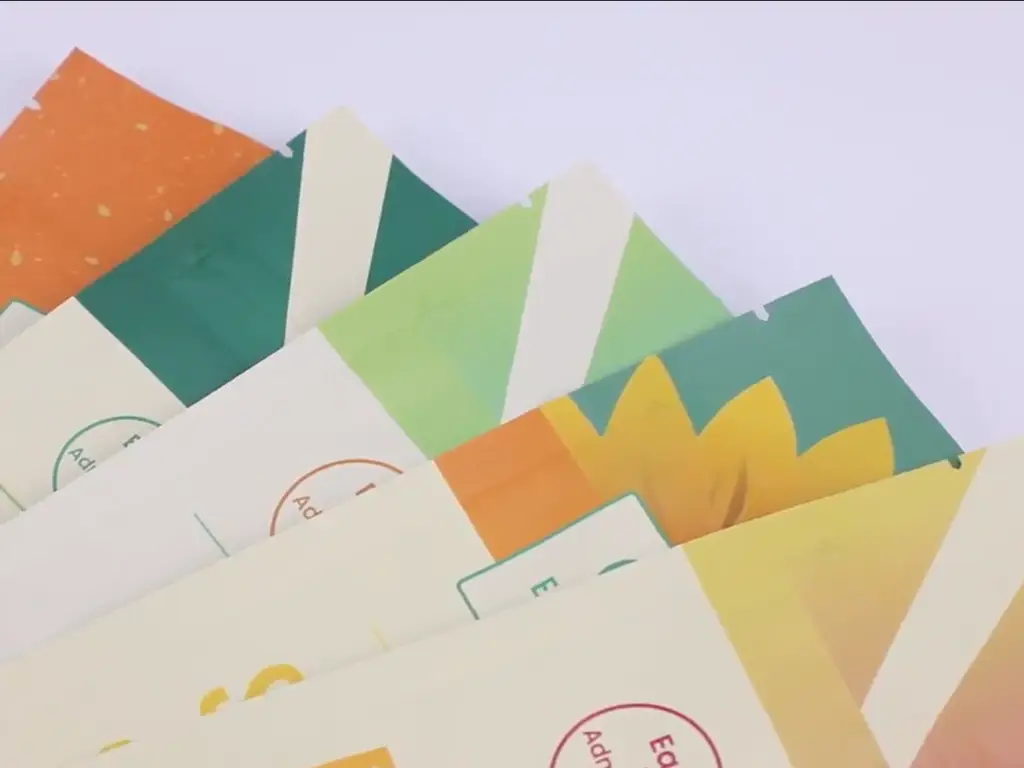
Your Checklist for Selecting the Perfect Pouch
With this knowledge in hand, you can now approach the selection process strategically. Ask yourself these fundamental questions. The answers will form the blueprint for your ideal package.
1. What is my product?
● Is it liquid, powder, or solid? This will affect the selection of materials and features, such as spouts.
● Is it sharp-edged? This can be puncture-resistant (which might need a puncture-resistant layer).
● Does it react to oxygen, light, or moisture? This determines the required level of barriers.
2. What is the weight of my product?
● Lightweight (< 500g / 1 lb): A Doyen Bottom is probably the most efficient one.
● Medium-weight (500g – 2.5kg / 1-5 lbs): A K-Seal or Quad Seal bag will be sufficient to give the required stability, weighing between 0.5 kg to 2.5 kg.
● Heavyweight (> 2.5kg / 5 lbs): A Box Pouch or a strong Quad Seal bag is essential.
3. Who is my client and what is my brand?
● Are we a luxury brand? It may be ideal (A Box Pouch with a matte finish).
● Is our identity playful and fun? A custom-shaped Pouch may be a game-changer.)
● Is our brand natural and organic-driven? It fits perfectly (Kraft paper).
4. What will be the usage of the product?
● Is it one-serving? A resealable zipper might not be needed.
● Is it a multi-purpose product? It must have a good zipper.
● Is it to be consumed on the go? The most important features are durability and easy-open.)
Bring Your Vision to Life with Baishen Pack
The blueprint is a checklist, and it takes an expert partner to execute. Since 2012, we have been a committed expert in custom flexible packaging at Baishen Pack, and we turn your vision into a competitive advantage. We are not only a supplier, we are your end-to-end solutions provider for the food, beverage, and pet food industries.
We are strong in versatility and unparalleled quality, and speed. We have a complete range of styles Doyen, K-Seal, Box Pouches, Quad Seal, and fully custom Shaped Pouches. We ensure performance with our in-house production, which is integrated with certified and food-grade materials. We offer low MOQs and quick turnarounds of 7-10 days, and our experienced team is on hand to offer you dedicated support to make your project a success, from concept to delivery.
Your brand should have a better package. We will construct it.
Ready to create the perfect pouch? Visit us at bsflexpack.com to explore our work and begin your packaging journey today.
The Future is Green: Sustainable Pouch Solutions
The topic of sustainability cannot be left out in any discussion of modern packaging. Consumer awareness has changed; the environmental responsibility of a brand is no longer a nice-to-have but a fundamental requirement. Luckily, the flexible packaging industry is developing at a very fast rate to keep up with this demand.
The future is intelligent material design. This includes:
● Recyclable Pouches: The industry is shifting to mono-material constructions (e.g., pouches composed of all polyethylene variants), which can be easily recycled in current streams, a major step towards the more traditional multi-material laminates.
● Post-Consumer Recycled (PCR) Content: Recycled materials used to make new pouches minimize the use of virgin plastics, creating a closed-loop and a circular economy.
● Compostable and Bio-based Materials: In certain applications, plant-based materials such as PLA (Polylactic Acid) can be used that provide an end-of-life solution where the packaging can be returned to the earth in industrial composting facilities.
Adopting such solutions is not only an ethical decision but also a good business decision. It makes your brand future-proof, in line with consumer values, and shows a commitment that goes beyond the product itself. The ideal pouch of today works perfectly without harming the planet it co-exists with.
